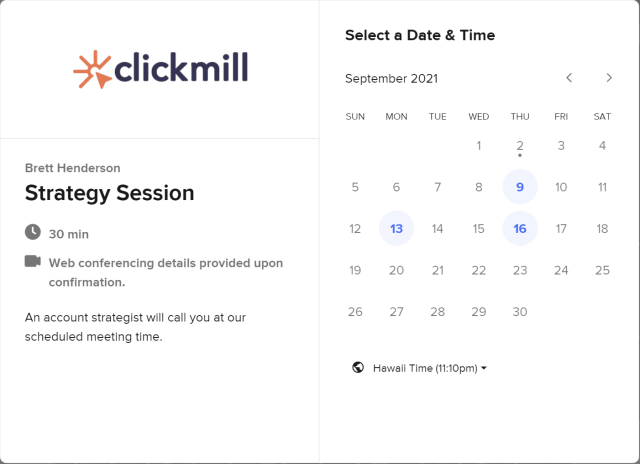Church metrics are important data points that track the health and success of a ministry. They help set measurable goals and guide data-driven decisions. Key metrics, like attendance, engagement, and outreach impact, are vital for church growth and financial management. Using technology and marketing can expand your reach while adjusting based on feedback ensures ongoing progress.
Church metrics are an essential tool for understanding the health and growth of your congregation.
They provide valuable insights that can help you make informed decisions to improve your church’s impact on your community. By measuring various aspects of church life, you can develop strategies to address the needs of your congregation and ensure the continued growth and success of your ministry.
What Are Church Metrics?

Church metrics are the quantitative measures that help church leaders and administrators understand how well their ministry is fulfilling its mission and goals. These metrics can include attendance numbers, giving amounts, baptisms, salvations, small group participation, volunteer involvement, and more. By tracking these metrics over time, church leaders can gain insights into what is working well and what needs improvement.
Church metrics are important because they provide tangible evidence of the impact a church is having on its members and the community it serves. They help leaders to make data-driven decisions and to evaluate the effectiveness of their strategies and programs. By measuring progress toward specific goals, churches can identify areas that need attention and make adjustments to their approach to better meet the needs of their congregation and community.
While church metrics are important, it is essential to remember that they are not the end goal. Church metrics should always be viewed in the context of the church’s mission and vision. They are simply a tool to help church leaders make informed decisions and track progress toward fulfilling that mission. By keeping the focus on the church’s overall purpose, church metrics can be used to guide strategic planning and decision-making in a way that is consistent with the values and priorities of the ministry.

Get A Proven Marketing Plan That Increases Enrollments When You Book A Call Today!
Receive customized advice to help your school attract more families!
Importance of Church Metrics
Monitoring church metrics allows you to identify areas of strength and weakness in your ministry. This data-driven approach enables you to make informed decisions and prioritize resources effectively. By tracking key performance indicators (KPIs), you can ensure that your ministry is making progress towards your spiritual and organizational goals.
If you are enjoying this post – you will really love our ultimate guide to church growth titled, Church Strategic Plan: Ensure Church Growth.
Set Measurable Ministry Goals
Setting goals is an essential part of any church’s growth strategy. By establishing measurable objectives, you can focus your efforts on the areas that will have the most significant impact on your congregation. Your goals should be aligned with your church’s mission and values and should be achievable within a specific timeframe.
Data-Driven Decision-Making
In the context of this article, data-driven decision-making (DDDM) plays a crucial role in helping churches grow and effectively engage their congregations. The process involves collecting data based on key performance indicators (KPIs) and transforming that data into actionable insights.

For churches, KPIs may include metrics such as attendance, giving, salvations, and baptisms. By utilizing church metrics, church leaders can make more informed decisions, ensuring that they are addressing the needs and aspirations of their congregation.
To implement data-driven decision-making in a church setting, follow these steps:
- Determine your objectives: Identify your church’s goals and objectives, such as increasing membership or engaging the youth. Breaking down these objectives into smaller, measurable goals can make them more achievable.
- Collect data: Gather data related to your church’s KPIs through tools like Church Metrics, which allows for easy tracking and analysis of relevant information[1].
- Analyze the data: Use the collected data to identify trends and patterns that can inform your decision-making process.
- Interpret the findings: Draw meaningful conclusions from the analyzed data, taking into account the unique context of your church and its congregation.
- Make data-driven decisions: Use the insights gained from the data analysis to make informed decisions that align with your church’s objectives and the needs of your congregation.
- Evaluate and adjust: Regularly review the results of your data-driven decisions and adjust your strategies as needed to ensure continuous growth and improvement.
By implementing data-driven decision making in your church, you can better understand your congregation’s needs and more effectively allocate resources to meet those needs, ultimately fostering a vibrant and engaged church community.
If you love this post, you’ll also enjoy our article titled, Church Consulting: Hire Your Ideal Church Consultant.

Get A Proven Marketing Plan That Increases Enrollments When You Book A Call Today!
Receive customized advice to help your school attract more families!
The Importance Of Measuring The Correct Church Metrics
The importance of choosing the right metrics to measure cannot be overstated, especially when it comes to church growth and decision making. Many churches may track the wrong types of data, leading to poor decision-making and misaligned goals. Key performance indicators (KPIs) are essential for understanding the progress of your organization towards its objectives and ensuring that your goals are met.

KPIs are quantifiable measures that evaluate the success of an organization in achieving its objectives. Each objective or goal that the church is striving for should be matched with one or two KPIs, ensuring that the data collected is relevant and actionable. It is crucial to remember that the KPIs must be aligned with the overall vision and goals of the ministry.
Choosing the wrong metrics to measure is the fastest way to make poor decisions. To avoid this, it is essential to focus on a few key metrics, rather than a vast array of data. Tracking too many KPIs can lead to overwhelming amounts of data and can cause a loss of focus. Concentrating on a few carefully selected KPIs enables the church to maintain clarity and direction in its decision-making processes.
In order to choose the right KPIs, the church must first identify its key objectives, which should be in line with the overall mission and vision of the ministry. Once the objectives are clear, KPIs can be selected that directly contribute to the achievement of these goals. This ensures that the church’s decision-making processes are grounded in data that is relevant and useful, ultimately leading to more informed decisions and successful outcomes.
Selecting the right metrics to measure is essential for effective decision-making within your church. By focusing on a few well-chosen KPIs that align with the church’s overall vision and objectives, leaders can ensure that their decisions are based on relevant and meaningful data, ultimately contributing to the growth and success of the ministry.
The Role of Church Metrics in Church Growth

Church Attendance
Regular church attendance is a vital sign of a healthy congregation. By monitoring attendance trends, you can identify patterns and make adjustments to your services and programs to better meet the needs of your congregation. Tracking attendance can also help you identify opportunities to engage new members and re-engage those who may have become disconnected from your church community.
Membership Growth
A growing membership is another indicator of a thriving church. By tracking membership growth, you can assess the effectiveness of your outreach and discipleship efforts. It’s essential to have a clear understanding of your church’s membership process and to actively engage with newcomers to help them feel welcome and connected to your community.
Engaging the Youth
Engaging the youth is crucial for the long-term health and growth of your congregation. By measuring youth engagement through programs and events, you can identify areas for improvement and ensure that you are meeting the needs of the younger generation. This will help your church develop future leaders and ensure that your ministry remains relevant to the next generation.
Church Metrics and Community Outreach
Assessing Community Needs
Understanding the needs of your community is crucial for developing effective outreach programs. By gathering data on local demographics and needs, you can tailor your church’s outreach
Evaluating Outreach Programs
By tracking the success of your outreach programs, you can ensure that your church is effectively reaching and serving your community. Collect data on program attendance, volunteer involvement, and the impact on participants to assess the effectiveness of your initiatives. This information can help you make data-driven decisions on how to improve and expand your outreach efforts.

Get A Proven Marketing Plan That Increases Enrollments When You Book A Call Today!
Receive customized advice to help your school attract more families!
Church Metrics and Financial Management

Budgeting and Stewardship
Effective financial management is crucial for any church. By monitoring your church’s income and expenses, you can make informed decisions about resource allocation and stewardship. Regularly reviewing your church’s budget can help you identify areas where you can optimize spending and ensure that your ministry is financially sustainable.
Tracking Giving and Tithes
Monitoring giving and tithes is essential for understanding your church’s financial health. By analyzing patterns in giving, you can identify opportunities to encourage generosity and develop strategies for increasing financial support. Regular communication with your congregation about the importance of giving and the impact of their contributions can help build a culture of generosity within your church.
Using Technology for Church Metrics
Church Management Software
Church management software can be an invaluable tool for tracking and analyzing church metrics. These tools can help you manage your church’s membership, attendance, giving, and more. By streamlining data collection and analysis, you can make data-driven decisions to improve the overall health of your ministry.
Social Media and Online Presence
An active online presence is essential for reaching new members and engaging your congregation. By tracking metrics like website traffic, social media engagement, and email open rates, you can assess the effectiveness of your online outreach efforts. Use this data to optimize your content strategy and better connect with your audience.
Leveraging Church Marketing and Advertising

Cost-effective Strategies
With a limited budget, it’s crucial to find cost-effective marketing strategies that help your church reach a wider audience. By monitoring the success of your marketing efforts, you can allocate resources to the most effective channels, like social media and church conferences[4].
Reaching a Wider Audience
Church advertising is an essential aspect of reaching new members and engaging your existing congregation. By tracking the success of your advertising campaigns, you can identify opportunities to expand your reach and improve your messaging[5].
Optimize Based on Feedback
Optimizing based on feedback and results is crucial for continuous improvement in any organization, including churches. As more data comes in, it’s essential to analyze the information and assess whether the desired results are being achieved in the ministry. If the expected outcomes are not met, it may be an indication that performance is being optimized based on the wrong metrics.

To ensure that the church metrics system is effective, it’s essential to gather feedback from various sources, such as team members, volunteers, and congregation members. This feedback should be used to evaluate the current metrics and identify areas where adjustments are needed. Leaders should be transparent about how feedback is being incorporated and what changes are being made as a result.
Don’t fall for the belief that your church metrics will somehow begin to produce results as soon as you implement them. Like with everything good, you will need to iterate, review, and review the process before it works.
When using real-life results as an indicator, it is essential to analyze both positive and negative outcomes. For example, if an outreach program is not reaching the desired number of people, it might be necessary to review the KPIs and metrics being used to optimize the program’s performance. Conversely, if a particular ministry initiative is performing exceptionally well, it’s essential to understand which KPIs and metrics are contributing to its success, so they can be replicated in other areas.
Using feedback and real-life results to update, change, and optimize the church metrics system is vital for continuous improvement and growth. Leaders should be open to incorporating feedback and adapting their approach based on the data they receive. By doing so, they can ensure that their church’s performance is being optimized based on the correct metrics, ultimately contributing to the success and growth of their ministry.
Church metrics are an essential tool for understanding the health and growth of your congregation. By tracking key performance indicators, you can make data-driven decisions that help your ministry thrive. Leveraging technology and marketing strategies can help you reach a wider audience and more effectively engage your congregation. Remember, as you work to grow your church and serve your community, always keep your focus on the spiritual health and well-being of your congregation.

Get A Proven Marketing Plan That Increases Enrollments When You Book A Call Today!
Receive customized advice to help your school attract more families!
FAQs
A: Church metrics are measurements of various aspects of church life, such as attendance, giving, and community outreach. They help church leaders make informed decisions and prioritize resources effectively.
A: By tracking key performance indicators like attendance, membership growth, and outreach success, you can identify areas for improvement and develop strategies to address the needs of your congregation.
A: Technology plays a significant role in church metrics by providing tools like church management software and social media analytics. These tools help streamline data collection and analysis, making it easier for church leaders to make data-driven decisions and engage their congregation effectively.
A: To improve your church’s financial management, track income and expenses, create a realistic budget, monitor giving and tithes, and communicate the importance of generosity to your congregation. Regularly reviewing your financial data can help identify areas for optimization and ensure financial sustainability.
A: Some cost-effective church marketing strategies include leveraging Artificial intelligence like Chat GPT to cut down on marketing costs, social media, attending church conferences, and optimizing your website for search engines. You can also schedule a call today to talk more about marketing training for ministries that increases what your team is capable of doing in house. By monitoring the success of your marketing efforts, you can allocate resources to the most effective channels and reach a wider audience[4].
How has your church successfully implemented church metrics to drive growth and make informed decisions? Share your experiences and insights in the comments below!

Responses